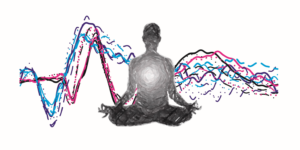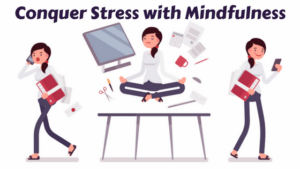Improve Opioid-Treated Chronic Low Back Pain with Mindfulness
By John M. de Castro, Ph.D.
“Mindfulness meditation and CBT-based interventions have the potential to safely reduce pain severity in patients with chronic lower back pain that’s treated with opioids,” – Dr. Aleksandra Zgiersk
Low Back Pain is the leading cause of disability worldwide and affects between 6% to 15% of the population. It is estimated, however, that 80% of the population will experience back pain sometime during their lives. The pain interferes with daily living and with work, interfering with productivity and creating absences. There are varied treatments for low back pain including chiropractic care, acupuncture, biofeedback, physical therapy, cognitive behavioral therapy, massage, surgery, opiate pain killing drugs, steroid injections, and muscle relaxant drugs. These therapies are sometimes effective particularly for acute back pain. But, for chronic conditions the treatments are less effective and often require continuing treatment for years and opiate pain killers are dangerous and can lead to abuse, addiction, and fatal overdoses. Obviously, there is a need for safe and effective treatments for low back pain that are low cost and don’t have troublesome side effects.
Pain involves both physical and psychological issues. Physically, exercise can be helpful in strengthening the back to prevent or relieve pain. Psychologically, the stress, fear, and anxiety produced by pain tends to elicit responses that actually amplify the pain. So, reducing the emotional reactions to pain may be helpful in pain management. Mindfulness practices have been shown to improve emotion regulation producing more adaptive and less maladaptive responses to emotions. Indeed, mindfulness practices are effective in treating pain and have been shown to be safe and effective in the management of low back pain. There is a need to explore the utility of mindfulness training when it is used as a supplement to opioid treatment for chronic low back pain.
In today’s Research News article “Cost of Opioid-Treated Chronic Low Back Pain: Findings from a Pilot Randomized Controlled Trial of Mindfulness Meditation-Based Intervention.” (See summary below or view the full text of the study at: https://www.ncbi.nlm.nih.gov/pmc/articles/PMC5836724/ ), Zgierska and colleagues recruited adults with chronic low back pain and were being treated with opioids. They were randomly assigned to either continue with only treatment as usual or receive additional mindfulness training delivered in 8-weekly 2-hour sessions with home practice. They were measured before and after training for pain severity, pain responses to heat, healthcare utilization, productivity loss, medication use, and costs associated with disability and treatment.
They found that in comparison to baseline and the treatment as usual control, the patients that received mindfulness training had significantly reduced pain severity and pain response to heat. In addition, the mindfulness group tended to have fewer lost days of work while the control group tended to use more opioid medication. In looking at the economic costs of opioid treatment for low back pain, they found that adding the mindfulness training did not increase overall costs. Hence, mindfulness training appears to additionally relieve chronic low back pain beyond the effects of opioid medication, yet does not cost any more.
So, improve opioid-treated chronic low back pain with mindfulness.
“Chronic pain is a condition best managed when patients take an active role and . . . . according to the research, mindfulness should now be a part of a multi-disciplinary strategy for those willing to put in the effort.” —Stephani Sutherland
CMCS – Center for Mindfulness and Contemplative Studies
This and other Contemplative Studies posts are also available on Google+ https://plus.google.com/106784388191201299496/posts and on Twitter @MindfulResearch
Study Summary
Zgierska, A. E., Ircink, J., Burzinski, C. A., & Mundt, M. P. (2017). Cost of Opioid-Treated Chronic Low Back Pain: Findings from a Pilot Randomized Controlled Trial of Mindfulness Meditation-Based Intervention. Journal of Opioid Management, 13(3), 169–181. http://doi.org/10.5055/jom.2017.0384
Abstract
Objective
Opioid-treated chronic low back pain (CLBP) is debilitating, costly and often refractory to existing treatments. This secondary analysis aims to pilot-test the hypothesis that mindfulness meditation (MM) can reduce economic burden related to opioid-treated CLBP.
Design
26-week unblinded pilot randomized controlled trial, comparing MM, adjunctive to usual-care, to usual care alone.
Setting
Outpatient
Participants
Thirty-five adults with opioid-treated CLBP (≥ 30 morphine-equivalent mg/day) for 3+ months enrolled; none withdrew.
Intervention
8 weekly therapist-led MM sessions and at-home practice.
Outcome Measures
Costs related to self-reported healthcare utilization, medication use (direct costs), lost productivity (indirect costs), and total costs (direct+indirect costs) were calculated for 6-month pre- and post-enrollment periods and compared within and between the groups.
Results
Participants (21 MM; 14 control) were 20% men, age 51.8 ± 9.7 years, with severe disability, opioid dose of 148.3 ± 129.2 morphine-equivalent mg/day, and individual annual income of $18,291 ± $19,345. At baseline, total costs were estimated at $15,497 ± 13,677 (direct: $10,635 ± 9,897; indirect: $4,862 ± 7,298) per participant. Although MM group participants, compared to controls, reduced their pain severity ratings and pain sensitivity to heat-stimuli (p<0.05), no statistically significant within-group changes or between-group differences in direct and indirect costs were noted.
Conclusions
Adults with opioid-treated CLBP experience a high burden of disability despite the high costs of treatment. Although this pilot study did not show a statistically significant impact of MM on costs related to opioid-treated CLBP, MM can improve clinical outcomes and should be assessed in a larger trial with long-term follow-up.
https://www.ncbi.nlm.nih.gov/pmc/articles/PMC5836724/









